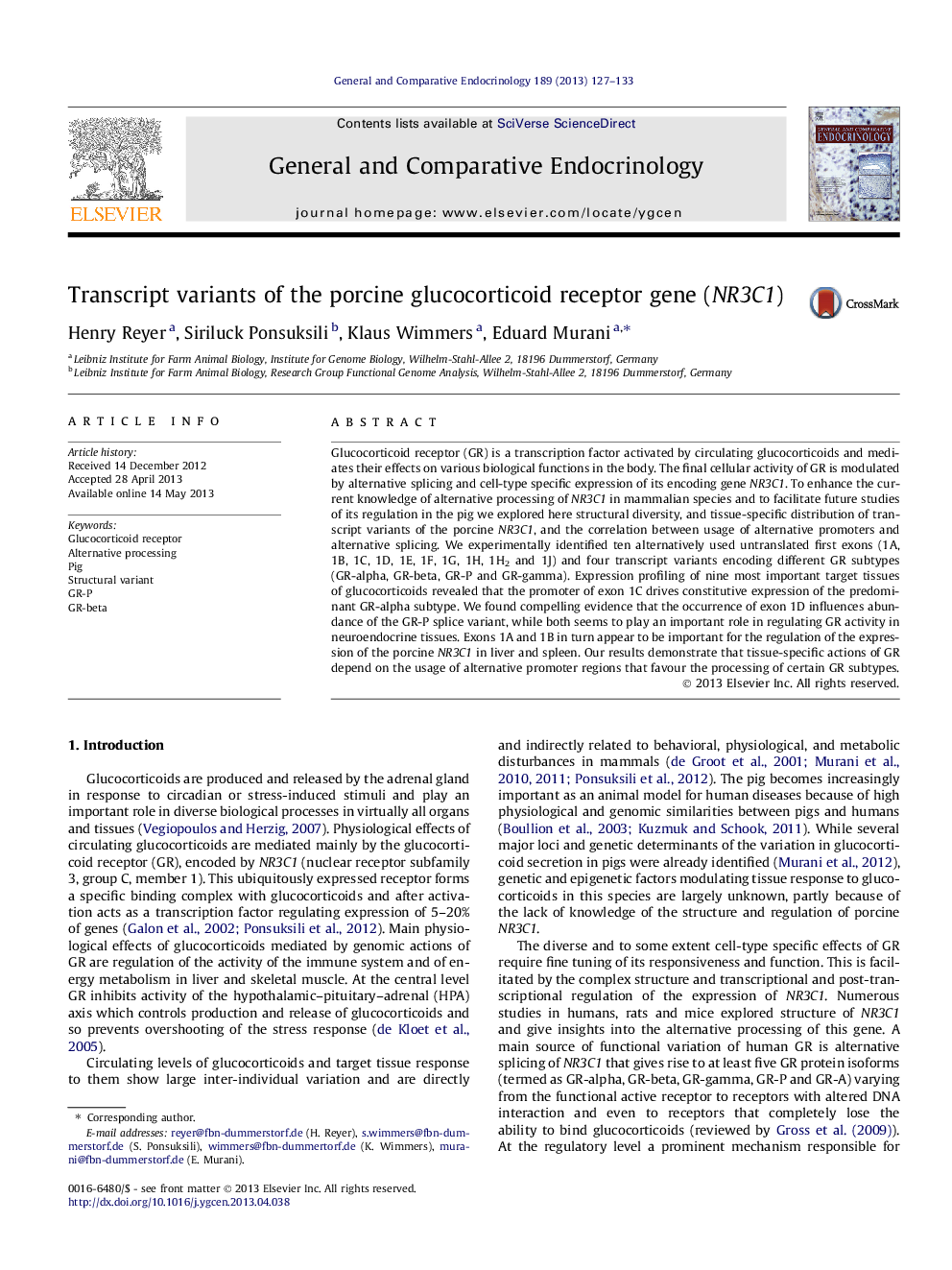| Article ID | Journal | Published Year | Pages | File Type |
|---|---|---|---|---|
| 5901438 | General and Comparative Endocrinology | 2013 | 7 Pages |
Abstract
Glucocorticoid receptor (GR) is a transcription factor activated by circulating glucocorticoids and mediates their effects on various biological functions in the body. The final cellular activity of GR is modulated by alternative splicing and cell-type specific expression of its encoding gene NR3C1. To enhance the current knowledge of alternative processing of NR3C1 in mammalian species and to facilitate future studies of its regulation in the pig we explored here structural diversity, and tissue-specific distribution of transcript variants of the porcine NR3C1, and the correlation between usage of alternative promoters and alternative splicing. We experimentally identified ten alternatively used untranslated first exons (1A, 1B, 1C, 1D, 1E, 1F, 1G, 1H, 1H2 and 1J) and four transcript variants encoding different GR subtypes (GR-alpha, GR-beta, GR-P and GR-gamma). Expression profiling of nine most important target tissues of glucocorticoids revealed that the promoter of exon 1C drives constitutive expression of the predominant GR-alpha subtype. We found compelling evidence that the occurrence of exon 1D influences abundance of the GR-P splice variant, while both seems to play an important role in regulating GR activity in neuroendocrine tissues. Exons 1A and 1B in turn appear to be important for the regulation of the expression of the porcine NR3C1 in liver and spleen. Our results demonstrate that tissue-specific actions of GR depend on the usage of alternative promoter regions that favour the processing of certain GR subtypes.
Related Topics
Life Sciences
Biochemistry, Genetics and Molecular Biology
Endocrinology
Authors
Henry Reyer, Siriluck Ponsuksili, Klaus Wimmers, Eduard Murani,
